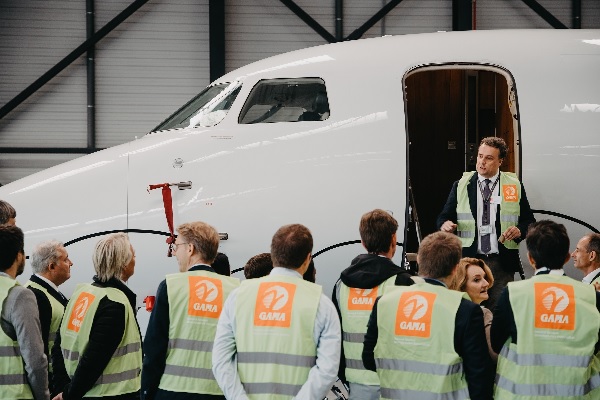 David Van Den Langenbergh, President of Aviation Services at Luxaviation Group, training DG MOVE staff;
Credit: Luxaviation Group
David Van Den Langenbergh, President of Aviation Services at Luxaviation Group, training DG MOVE staff;
Credit: Luxaviation Group
Luxembourg-headquartered Luxaviation Group, one of the largest private aircraft operators worldwide, recently participated in the General Aviation Education Tour organised by the General Aviation Manufacturers Association (GAMA) for the Directorate-General for Mobility and Transport (DG MOVE), the European Commission’s Aviation Safety Unit.
On this occasion, Luxaviation's management trained DG Move staff including its Head of Unit, Dr. Joachim Lueking, and his team of fifteen policy and legal officers. These officers are the authors and reviewers of the EU’s aviation safety policy, which includes the European Union Aviation Safety Agency (EASA) Basic Regulation, Operations and Licencing regulations, as well as international agreements such as the EU’s Bilateral Aviation Safety Agreements (BASA) with the US, Canada and Brazil.
David Van Den Langenbergh, President of Aviation Services at Luxaviation Group, commented: “Interfacing with DG Move team is a unique opportunity to educate and emphasise our key policy messages to the European Commission, ahead of the new EU political leadership taking office in November this year”.
Accompanied by Luxaviation management, the DG Move team visited Luxaviation's premises at Brussels National Airport and the Namur-Suarlee Aerodome (EBNM) to observe various general aviation aircrafts on static display and innovative technology.
Moreover, the GAMA board nominated David Van Den Langenbergh as chairman of the General Aviation Manufacturers Associations European Regulatory Affairs Committee which will be voted at the board meeting this autumn.
Throughout the programme, current sector related issues have been discussed, such as eco aviation carbon taxes, flight training, disrupted bilateral agreements and split opinions in the Federal Aviation Administration and EASA relations due to politics, future workforce issues and the need to adjust training requirements to meet future needs.








